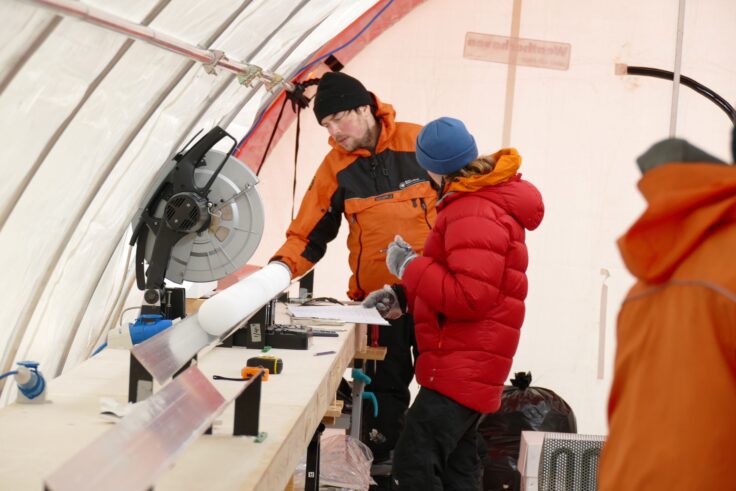Antarctic ice explains dip in CO2 levels
Small bubbles of air from ice in Antarctica resolve a long-standing debate about why there was a decline in atmospheric carbon dioxide (CO2) during the 16th and 17th centuries.
The new analysis, led by scientists at British Antarctic Survey (BAS), suggests that the decline was more gradual than some previously believed and that large-scale land use changes as Europeans colonised the Americas are likely responsible.
The team was able to align their new measurements in the decline of CO2 with existing models of how land use changed. The arrival of Europeans to the Americas brought diseases to which indigenous populations had not previously been exposed, such as smallpox, measles and the plague. Sweeping epidemics vastly decreased the indigenous population and led to forest regrowing over land that was most likely previously managed by thriving communities.

Lead author Dr Amy King, an ice core scientist at BAS, says:
“These results show that changes to human behaviour can be impactful in decreasing atmospheric CO2 over short timescales. It also shows that our new ice core measurements agree more closely with the ice core record from the West Antarctic Ice Sheet. Importantly, this slower 16th and 17th century decline in CO2 is around half the rate previously proposed, and human land use changes could almost entirely account for the changes we’ve measured.”
The study, published in the journal Nature Communications, suggests that new, improved measurements of CO2 could greatly enhance our understanding of human driven and natural carbon cycle changes.
Ice cores — frozen cylinders of ice drilled from ice sheets and glaciers — provide a time capsule for scientists to understand past climate. As layers of snow build up and are compressed into ice, they trap bubbles of air inside and create a record of atmosphere at the time.
The team studied an ice core collected from the Skytrain Ice Rise expedition in Antarctica which contains atmospheric data from 1454 to 1688 CE.
The Skytrain ice core was drilled in 2018-19 at the edge of the West Antarctic Ice Sheet. It is 651m deep and provides a record going back over thousands of years. In this study, the team measured CO2 and Methane (CH 4) levels over the 234 year period from 1454-1688 and saw that CO2 decreased gradually between 1516-1670 CE by around 0.5 ppm per decade.

Co author and ice core expert Dr Thomas Bauska from BAS, says:
“It is truly sobering to confirm that the last time, if not the only time, in history that our human activity decreased rather than increased CO2, it was due to devasting loss associated with the colonization of the Americas.”
Prior to the analysis of the Skytrain ice core, scientists faced conflicting data records from two older ice cores, known as the Law Dome core and the West Antarctic Ice Sheet (WAIS) Divide core. The Law Dome is an older record and indicates a greater, rapid decrease in CO2of 9.9ppm over 84 years; whereas WAIS Divide data shows a smaller and slower decrease of 6.7ppm over 117 years.
The precision of the new Skytrain ice cores data allows scientists to have greater certainty in the Earth’s atmospheric history. The core, measured with the most up-to-date laboratory techniques, makes it possible to more precisely define the timing and magnitude of the land’s response to carbon uptake.
Reconciling ice core CO2 and land-use change following New World-Old World contact, by King, A.C.F., Bauska, T.K., Brook, E.J. et al. is published in Nature Communications, 15, 1735 (2024).